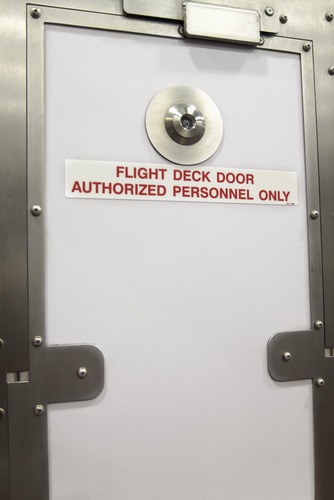
More than two years after a mandated deadline, U.S. Sens. Bob Casey (D-PA), Ed Markey (D-MA) and John Fetterman (D-PA) wrote to federal officials last week urging implementation of the Saracini Aviation Safety Act of 2018 that required secondary cockpit barriers for new commercial aircraft.
The idea behind the legislation was that all new commercial aircraft would gain an extra layer of protection and separation between the cockpit and the cabin. This was to be made mandatory within a year of the law’s enactment, but while the Federal Aviation Administration (FAA) issued a proposed rule requiring these barriers last year and ultimately closed public comment in September 2022, no public update followed in the months since, nor visible deployment of a final rule.
“Hundreds of new planes have entered use since October 5, 2019, the statutory date for implementation of the rule, but none of these aircraft were required to be equipped with secondary barriers,” the senators wrote to Department of Transportation Secretary Pete Buttigieg and Acting FAA Administrator Billy Nolen. “With the average airplane staying in commercial service for 20 – 30 years, this means that millions of flights will occur without the Congressionally required safety mechanisms in place. Further delays in implementation, compounded by the two-year transition period in the proposed rule, will only increase that number.”
The legislation was named for Captain Victor Saracini, who piloted United Flight 175 on Sept. 11, 2001 – one of the flights hijacked by terrorists and flown into the World Trade Center.
At this point, the senators requested that the FAA provide an update on its timeline for issuing a final rule. They also asked for the agency’s plans to address the safety of those planes that have entered use over the intervening years while Congress awaited implementation of the new safety installations.




